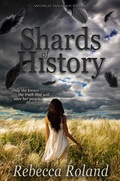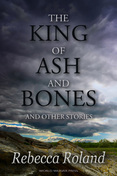 Rebecca Roland looks at Sleeping Beauty and Jim Hines' The Stepsister Scheme as part of our Fairy Tale Festival: A couple of years ago I bought this huge book of classic stories for my son, which includes many fairy tales. I was reading Sleeping Beauty to him when a new story idea jumped into my head. I immediately went to check if anybody else had done it (nope). However, quite a few people had written retellings or variations of the fairy tale. So I jotted down a bunch of notes. I outlined that story and did research, but haven't written it yet. As part of the research, I read Jim Hines' The Stepsister Scheme, which is a story that tells what happens after Cinderella's honeymoon and also includes Snow White and Sleeping Beauty. Growing up, I was familiar with the 'sanitized' version of popular fairy tales common in animated movies or in books. As an adult, I realized there were different, older, darker versions of fairy tales. The animated versions are nice for kids, but it was the darker versions that really called to me, and it's those origins that Hines uses in The Stepsister Scheme to explore feminism and sexuality. Hines' book is only one example of the many contemporary stories based on fairy tales. So what is it that attracts people to fairy tales over and over again? Why did Sleeping Beauty, in particular, call to me, and why does it call to others? Even if you ignore the original version, which includes cannibalism, adultery, and rape, the safe-for-kiddies version can still be disturbing. A young woman falls into a deep sleep, and nothing can awaken her from it except for the kiss of a prince. She's hidden away from the world. Everybody else goes on about their business while she remains in stasis, unable to fend for herself. I find that horrifying (and when you add the other stuff from the original, even more so). We are all vulnerable when we sleep. A magic sleep from which one cannot awake is even more so. The situation taps into a primal fear. Anything at all could happen to a person in that state. In the case of the original Sleeping Beauty story, a prince comes along all right, but he takes advantage of the vulnerable princess and leaves her pregnant with twins. She wakes up to find that she's been raped and is a mother. Beauty's long sleep could stand as metaphor for many things that leave us helpless: the illness or death of ourselves or a loved one, natural disasters, war, financial woes, the loss of a job, the loss of a limb, or a crime committed against us. We come out of the situation and say, "What the heck just happened to me?" There's anger, fear, guilt, depression, and the need to thrash someone or something. Hines, in my humble opinion, does a great job of portraying the aftermath of Beauty's slumber and rape. She's a secondary character, as this novel is told from Cinderella's point of view, but she's actually the one who stood out to me in this novel. She was helpless once, but never again.  Rebecca Roland lives in Albuquerque, New Mexico, where she writes primarily fantasy and horror. Her short fiction has appeared in Everyday Fiction, Uncle John’s Flush Fiction and in Stupefying Stories, and she is a graduate of the Odyssey Writing Workshop. When she’s not writing, she’s usually spending time with her family, torturing patients as a physical therapist, or eating way too much chocolate.
0 Comments
Your comment will be posted after it is approved.
Leave a Reply. |
World Weaver PressPublishing fantasy, paranormal, and science fiction. Archives
February 2024
|
- Home
-
Books
-
All Books
>
- Beyond the Glass Slipper
- Bite Somebody
- Bite Somebody Else
- Black Pearl Dreaming
- Cassandra Complex
- Causality Loop
- Clockwork, Curses, and Coal
- Continuum
- Corvidae
- Cursed: Wickedly Fun Stories
- Dream Eater
- Equus
- Fae
- Falling of the Moon
- Far Orbit
- Far Orbit Apogee
- Fractured Days
- Frozen Fairy Tales
- Glass and Gardens: Solarpunk Summers
- Glass and Gardens: Solarpunk Winters
- Grandmother Paradox
- Grimm, Grit, and Gasoline
- Haunted Housewives
- Heir to the Lamp
- He Sees You When He's Creepin': Tales of Krampus
- Into the Moonless Night
- Jack Jetstark's Intergalactic Freakshow
- King of Ash and Bones (ebook)
- Krampusnacht
- Last Dream of Her Mortal Soul
- Meddlers of Moonshine
- Mothers of Enchantment
- Mrs Claus
- Multispecies Cities
- Murder in the Generative Kitchen
- Recognize Fascism
- Scarecrow
- Sirens
- Shards of History
- Shattered Fates
- Skull and Pestle
- Solarpunk (Translation)
- Solarpunk Creatures
- Solomon's Bell
- SonofaWitch!
- Speculative Story Bites
- Trenchcoats, Towers, and Trolls
- Weredog Whisperer
- Wolves and Witches
- Anthologies and Collections
- Novels
- Novellas
- Fairy Tale
- Fantasy
- Romance
- Science Fiction
- Urban/Contemporary Fantasy
- Young Adult SFF
-
All Books
>
- Blog
- About
- Contact
- Press / Publicity
- Newsletter Signup
- Privacy Policy
- Store



 RSS Feed
RSS Feed